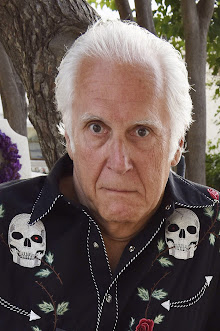Last week, I drove from Baltimore to St. Paul, Minnesota to be with family for Thanksgiving.
To my surprise, I got a bonus holiday: Hmong New Year. And what a gift it seems to live in a country where people have arrived from so many different parts of the world to share their traditional food, music, art, and other gifts. Public admission was just $12—how could I miss the party?
The traditional lunar calendar observed by Hmong people marked Saturday Nov 30 as the last day in 2024, and Dec 1 as actually New Year’s Day. Hmong New Year’s beliefs are tied to ancestor remembrance and the renewal of shamanistic energy. Yet the Hmong New Year I experienced with my outsider eyes was a very jolly celebration with upwards of 40,000 people streaming into River Centre, a huge convention hall in Saint Paul, MN. I was dazzled by the colors and complex embroidery of clothing worn by women, men and kids. The jingling of thousands of silver coins and strands of pearls on people’s clothes filled my ears. I marveled at the complexity of different hats and the festive high heeled shoes many wore to set off their finery. It seemed the most popular color was pink--often accented with green and black. Brilliant!
St. Paul happens to be of the largest population bases for Hmong in the United States; Fresno, California, is the other location. The largest New Year’s celebrations are housed in these cities, and the one in St. Paul was billed as United Hmong Family Reunion, a coming together of members of many different tribes. The Hmong people have traveled far over the centuries from their original Hmong kingdom in North China to different parts of Southeast Asia, most famously Laos. Some Hmong people still do live in China—but because of past persecutions including the suppression of language, many fled to start new lives in independent agrarian tribal communities elsewhere.
A second exodus occurred in the 1970s and 1980s. During the Vietnam war, the American military enlisted thousands of Hmong men to help fight a shadow war to suppress communism in Laos. When the Americans withdrew from that unwindable war, the Hmong remaining in Laos were in mortal danger. The first groups of Hmong military families were airlifted in the 1970s, and many other Hmong families swam, floated or boated across the water to a refugee camp in Thailand, where they lived for years until refugee visas were finally issued by the United States. The first refugees were settled in a scattershot approach in several states. In the 1980s, Lutheran Social Services and Catholic Charities in Minnesota accepted government contracts to oversee resettling Hmong families here. After that, Hmong living in other parts of the US chose to relocate to be near family members and because the city of St. Paul has largely been a friendly place to settle.
In the 1980s and 1990s, I met Hmong people selling beautiful vegetables and gorgeous embroidery at Twin Cities farmers’ markets. Some very special ornaments on my Christmas tree are fabric embroidered in famous Hmong reverse applique patterns. It was exciting to see so much bright clothing for sale at the RiverCentre and to be gifted a free book about Hmong Textile Art when I stopped to chat at the Hmong Cultural Center, a group that supports traditional culture and also helps people secure citizenship. I also met young Hmong-Americans running an early childhood education program that aims to make young children feel good about their heritage, and helps the adults involved in their education learn about Hmong family life. Several tables were staffed by the St. Paul police and similar agencies looking to hire. I learned this was the 44th Hmong New Year celebration in Minnesota—and that the anniversary of Hmong resettlement in the United States is 50 years as of 2025.
The deepest current I sensed was that of playful socialization with old and new friends. People lined up to toss colorful fabric balls back and forth to each other. Turns out this is a popular game at New Year’s that’s also a way for young men and women to signify romantic interest. An American-style beauty pageant for Hmong women took place on one stage, while youth dancers in fantastic costumes and makeup performed traditional dances on another. A food hall sold Hmong favorites like sesame balls, stuffed chicken wings, pork sausage, and a vermicelli-beef noodle soup fragrant with lemongrass and mint.
I lingered outside traditional thatched bamboo Hmong house where families posed for new year’s photographs. It seemed that under this roof, a traditional way of life was proudly remembered; an experience that many of us share during the holiday season.
























What a wonderful experience, Sujata. As you point out, it's wonderful to have such a mix of cultures and ideas!
ReplyDelete